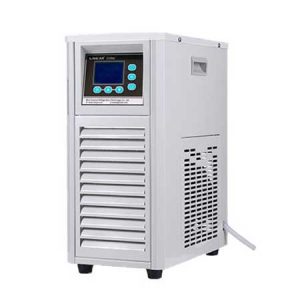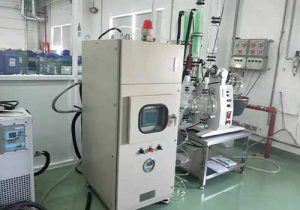electric heating cooling system
Electric Heating and Cooling System: Detailed Explanation
- Introduction to Electric Heating and Cooling Systems
Electric heating and cooling systems represent a modern approach to climate control that eliminates the need for fossil fuel combustion. These systems use electricity to:
Transfer heat (in heat pump systems)

Generate heat (through resistance heating)
Remove heat (via refrigeration cycles)
They’re particularly suitable for:
Areas with clean electrical grids
Buildings seeking to reduce carbon emissions
Applications requiring precise temperature control
- Types of Electric Heating and Cooling Systems
A. Heat Pumps
The most energy-efficient option, providing both heating and cooling by reversing the refrigeration cycle. - Air-Source Heat Pumps
Extract heat from outdoor air (even in cold temperatures)
Typical COP (Coefficient of Performance) of 2-4
Can be ducted or ductless (mini-split systems)
- Ground-Source (Geothermal) Heat Pumps
Use stable ground temperatures for higher efficiency
COP often exceeds 4.0
Higher upfront cost but lower operating expenses
- Water-Source Heat Pumps
Utilize nearby water bodies for heat exchange
Common in commercial applications
B. Packaged Terminal Air Conditioners (PTACs)
All-in-one units common in hotels and apartments
Provide both heating (electric resistance) and cooling

Easy to install but less efficient than heat pumps
C. Electric Furnace with Central AC
Electric resistance coils provide heating
Separate AC system for cooling
Less efficient than heat pumps but simpler design
D. Variable Refrigerant Flow (VRF) Systems
Advanced commercial systems
Can heat and cool different zones simultaneously
Excellent for large buildings with varying needs
- How Electric Heating and Cooling Systems Work
Cooling Operation:
Warm indoor air passes over evaporator coils
Refrigerant absorbs heat and evaporates
Compressor pressurizes refrigerant gas
Condenser coils release heat outdoors
Expansion valve reduces pressure, cooling refrigerant
Cycle repeats continuously
Heating Operation (Heat Pump Mode):
Reversing valve changes refrigerant flow direction
Outdoor coil absorbs ambient heat
Compressor increases refrigerant temperature
Indoor coil releases heat to living spaces
Expansion valve regulates pressure
Process reverses when cooling is needed
Electric Resistance Heating:
Current passes through high-resistance wires
Electrical energy converts directly to heat
Blower circulates warmed air
Simple but less efficient (100% conversion)
- Key Components
- Compressor
Heart of the refrigeration cycle

Increases refrigerant pressure and temperature
- Heat Exchanger Coils
Evaporator (indoor unit)
Condenser (outdoor unit)
- Reversing Valve (Heat Pumps Only)
Changes refrigerant flow direction for heating/cooling
- Expansion Device
Meters refrigerant flow
Creates pressure drop for cooling effect
- Air Handler
Contains blower and filters
Distributes conditioned air
- Thermostat/Control System
Manages temperature settings
Modern systems use smart algorithms
- Energy Efficiency Considerations
Performance Metrics:
SEER (Seasonal Energy Efficiency Ratio): Cooling efficiency (higher is better)
HSPF (Heating Seasonal Performance Factor): Heat pump heating efficiency
COP (Coefficient of Performance): Ratio of heat moved to energy used
Efficiency Improvements:
Inverter-driven compressors
Variable-speed blowers
Improved heat exchanger designs
Smart defrost cycles
Comparison to Other Systems:
More efficient than resistance-only heating
Comparable to high-efficiency gas in moderate climates
Less efficient than gas in very cold climates (without cold-climate models)
- Installation Considerations
- Sizing Requirements
Oversizing leads to short cycling
Undersizing can’t maintain temperature
Manual J calculation recommended
- Electrical Requirements
Heat pumps typically need 240V service
Larger systems may require panel upgrades
Ground-source systems need significant electrical infrastructure
- Ductwork Considerations
Existing ducts may need modification
Ductless options available
Duct sealing improves efficiency
- Location Factors
Outdoor unit placement affects performance
Noise considerations for residential areas
Accessibility for maintenance
- Maintenance Requirements
Monthly:
Filter checks/changes
Visual inspection of outdoor units
Seasonal:
Coil cleaning
Refrigerant level checks
Electrical connection inspection
Annual Professional Service:
Comprehensive system check
Duct inspection (if applicable)
Performance testing
- Advantages of Electric Systems
Environmental Benefits:
Zero on-site emissions
Can pair with renewable energy
No combustion byproducts
Operational Advantages:
Quiet operation
Precise temperature control
Long lifespan (15-20 years for heat pumps)
Economic Factors:
Lower maintenance costs
Eligible for many rebates
Stable electricity prices in many regions
- Limitations and Challenges
Climate Considerations:
Standard air-source heat pumps lose efficiency below -10°C
May require supplemental heating in extreme cold
Electrical Infrastructure:
High power demand during peak heating
May require service upgrades
Upfront Costs:
Ground-source systems have high installation costs
Quality units command premium pricing
- Future Developments
Emerging Technologies:
Cold climate heat pumps (-30°C capability)
Magnetocaloric refrigeration
Improved thermal storage systems
Integration Trends:
Smart grid compatibility
Solar PV system pairing
AI-driven load management
Regulatory Changes:
Phasing out high-GWP refrigerants
Stricter efficiency standards
Electrification incentives
Conclusion
Electric heating and cooling systems offer a versatile, environmentally friendly solution for modern climate control needs. While they present certain challenges in extremely cold climates, technological advancements continue to expand their applicability. Proper system selection, professional installation, and regular maintenance are key to maximizing performance and efficiency. As electrical grids become cleaner, these systems will play an increasingly important role in building decarbonization efforts.
Related recommendations
How to handle the overload of the 100 ton chiller water pump?
1248How to handle the overload of the 100 ton chiller water pump? 1、 Reason There are many reasons for the overload of the water pump of a 100 ton chiller, most of which are long eq...
View detailsFeatures and Usage Methods of Closed High Temperature Heating Circulator
1744Features and Usage Methods of Closed High Temperature Heating Circulator The closed high-temperature heating circulator is the equipment used in the refrigeration and heating temperature con...
View detailsportable heating system
631Introduction to Portable Heating SystemsPortable heating systems are designed to provide heat in a flexible and convenient manner. They are ideal for situations where permanent heating solutions a...
View detailsmulti stack chillers
403IntroductionIn the realm of cooling technology, multi stack chillers have emerged as a highly efficient and flexible solution for various cooling needs. Whether it's maintaining comfortable tempe...
View details
 LNEYA Chiller
LNEYA Chiller






HelloPlease log in